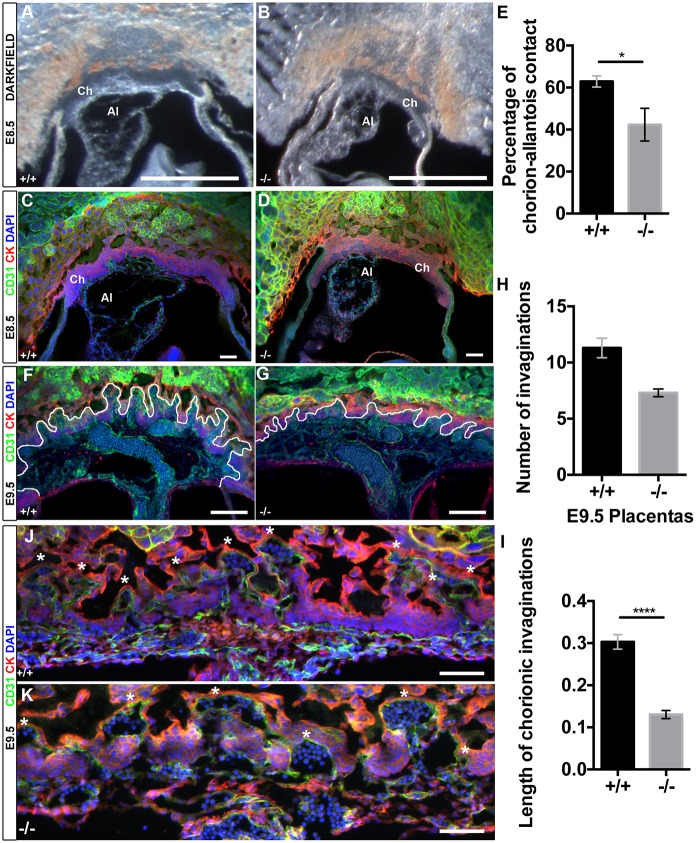Fig. 4.
Egfl7−/− conceptuses show reduced chorioallantoic branching morphogenesis. (A,B) Representative dark-field images of 100 µm vibratome sections of E8.5 conceptuses from C57BL/6J (+/+) and Egfl7−/− mice. (C,D) Confocal images of 100 µm vibratome sections of E8.5 conceptuses from C57BL/6J (+/+) and Egfl7−/− mice, immunostained for CD31 (green), cytokeratin (red) and nuclear DAPI (blue), demonstrating a small allantois less efficiently adhered to the chorion in the mutants. (E) Quantification of the percentage of chorion that is attached to the allantois revealing a significant decrease in chorio-allantoic contact in Egfl7−/− conceptuses (+/+, n=5; −/−, n=4). (F,G) Confocal images of 100 µm vibratome sections of E9.5 conceptuses from C57BL/6J (+/+) and Egfl7−/− mice, immunostained for CD31 (green), cytokeratin (red) and DAPI (blue). Chorionic invaginations into which fetal vasculature is invading are indicated by a white line. (H,I) Quantification of the number (H) and length in mm (I) of invaginations in E9.5 placentas of C57BL/6J (+/+, n=3) and Egfl7−/− (n=3) mice. (J,K) High-magnification images of 10 µm cryosections of E9.5 placentas showing stunted and reduced number of invaginations in Egfl7 mutant placentas (K). Asterisks indicate each chorionic fold. Ch, chorion; Al, allantois. Student's t-test; data are mean±s.e.m. *P<0.05, ****P<0.0001. Scale bars: 500 µm in A,B; 100 µm in C,D,J,K; 200 µm in F,G.

